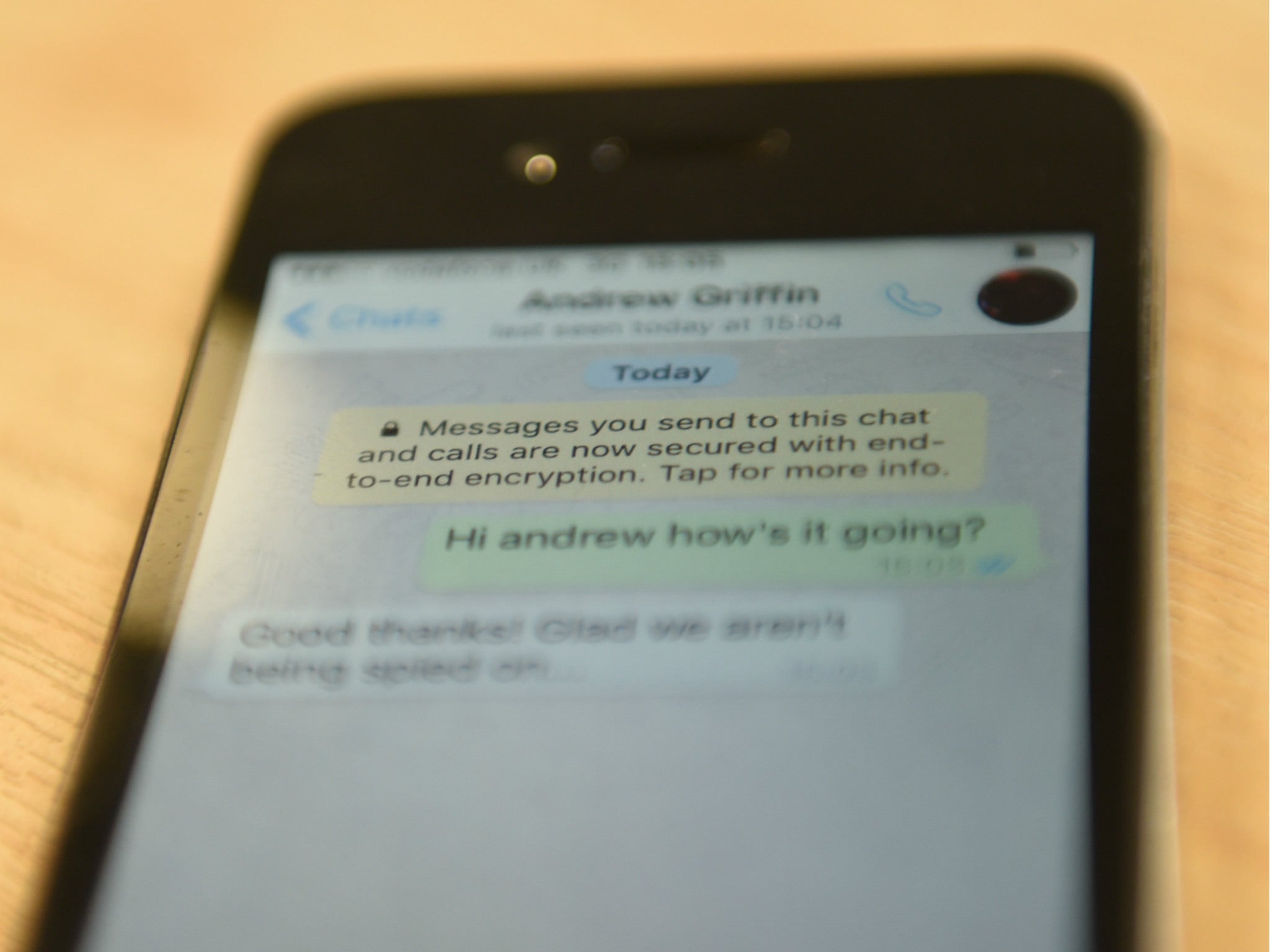WhatsApp end-to-end encryption: Why app is showing yellow bubble to tell people data is secure
'Messages you send to this chat and calls are now secured with end-to-end encryption,' a little yellow pop-up reads — but what exactly does that mean?

WhatsApp has added end-to-end encryption, and announced it with a little yellow pop-up that reads: "Messages you send to this chat and calls are now secured with end-to-end encryption". But it's been much less clear about what exactly that means.
The new technology is intended to ensure that messages can't be intercepted, and stay secure. While there are some concerns about exactly how private those messages are, it is a huge new development in the ongoing argument about how private our communications should be.
What exactly is end-to-end encryption?
It is a highly technical method for ensuring that messages can’t be intercepted. It means that only the people sending and receiving a message can see what’s inside of it — stopping them from being snooped on by hackers and spies, and even the messaging companies themselves.

How does it do that?
Encryption works by scrambling up the message in a way that requires a specific key to unscramble it again. End-to-end encryption means that only the people on each end of the conversation has those keys, and so if everything works properly only those people can read them.
How exactly that works depends on the system, and how it is implemented. But the principle is always the same: using mathematical concepts to ensure that only a sender and a recipient can read any given message.
What has WhatsApp changed?
The site has had a form of end-to-end encryption since the end of 2014. But it just announced that every message — not just texts, as before, but also voice calls, pictures, videos and other files, on every platform.
Why did WhatsApp add it?
The company said that it had done so simply to make the site more secure — by forcing itself to be unable to give up information to hackers or to oppressive governments (it didn’t say which ones).
But the change comes at an important time for encryption, privacy and security. In the US, Apple just ended a public fight with the FBI over whether it should have helped break into an iPhone; in the UK, a bill currently being considered by parliament has measures that appear to allow the government to force companies to break their own encryption.
WhatsApp and its founders have publicly supported Apple and other companies in the past over those arguments. And so it’s likely they considered that adding encryption at this moment in time would look like a huge expression of support for the security technology — making it important far beyond the actual technological change.
Join our commenting forum
Join thought-provoking conversations, follow other Independent readers and see their replies
Comments